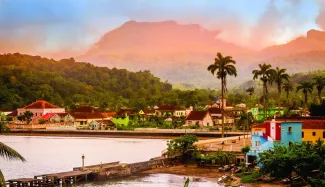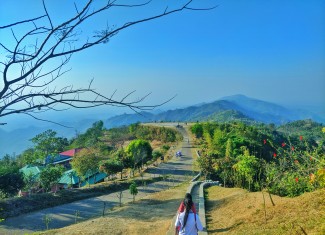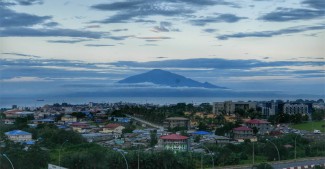Bhutan has a vulnerable and fragile mountain ecosystem. It has made a conscious decision to maintain 60% of its territory covered by forests and enshrine this commitment in its constitution. Currently forests cover over 72% of its territory.
Bhutan’s carbon sequestration is 9.47 million tons CO2 equivalent (CO2e) per year and emissions stand at 3.8 million tons CO2e. It has reaffirmed its commitment to remain carbon neutral for all times in its updated National Determined Contributions (NDC). Hydropower projects currently offsets around 11 million tons CO2e, with another 12 million tons CO2e of hydropower projects under construction.
Like most least developed countries (LDCs), Bhutan’s export basket is at the lower end of value and largely includes primary or semi-processed goods. Our major exports are hydroelectricity, non-ferrous metals, minerals, cement and boulders. Our imports are finished goods or intermediaries of higher value such as fuel, machinery, rice, and vehicles.
Bhutan’s trading partners are concentrated in the region, whereby Bhutan competes with large scale competitors with lower environmental standards. Exporting to developed countries is difficult because we compete either with the same regional competitors for the same export markets or face even larger competitors from industrialized countries.
Bhutan and other LDCs face numerous constraints and challenges to trade. We suffer from a lack of trade facilitation infrastructure - both soft and hard components; technical barriers to trade (TBT) and sanitary and phytosanitary (SPS) measures used as non-tariff measures; trade finance; supply side constraints; and limited market access to name a few.
In addition to these trade challenges, Bhutan is also on the frontline in terms of adverse impacts of climate change. We are increasingly suffering extreme weather events such as floods, landslides, glacial lake outburst floods, forest fires, windstorms and melting glaciers. As a result, Bhutan is struggling to finance adaptation and build resilience to climate change.
Tapping into the economic development opportunities that trade offers could help LDCs and Bhutan finance climate-resilient economies. An option could be to make carbon neutral exports earn a premium over carbon-intensive exports from countries. This could help reduce the challenges of imported emissions in major markets and contribute to raising global climate ambition.
Net zero trade offers a potential to turn the historic disadvantage of low industrialization and low levels of pollution into a trade and climate advantage. Unfortunately, there are still capacity and regulatory barriers to this endeavour. Overall, there must be increased and enhanced efforts from the developed countries to support trade with LDCs.
For example, ferro-silicon exports from Bhutan to South Asian steel industries hold a lot of promise. Production is energy intensive and Bhutan, with its hydropower, ensures this material is produced from clean energy with minimal carbon footprint. But capturing higher value is difficult due to quality, production constraints and competition with buyers preferring lower priced products even if manufactured with high carbon intensity.
Likewise, in agriculture on which most people in LDCs depend for livelihood, the requirements for organic certifications, SPS certifications and, now carbon certifications, are stringent. It is difficult for many LDCs to comply with them even when their farming is eco-friendly and carbon neutral.
Securing climate-compatible development will only be possible through aligning climate and trade policy in a way that works for the most vulnerable countries such as Bhutan and LDCs. Too often we have borne the brunt of climate change even though it is no fault of ours. As such, Bhutan and many LDCs have deep concerns that the European Union’s Carbon Border Adjustment Mechanism (CBAM) will impede exports from LDCs and unintentionally distort trade to our disadvantage.
LDCs do not seem to be exempted from the proposed CBAM and will require support for carbon accounting and other new requirements. Such support could come through Aid for Trade (AfT) but there is yet to be a conceptual framework to integrate these considerations.
The unintended consequences of CBAM will adversely affect trade for LDCs and therefore LDCs and graduating countries will need support for this changing trade landscape covering physical and regulatory effects. CBAM should not result in penalizing development and prosperity.
The international climate and trade architecture both have mechanisms for disbursing concessional finance to lower income countries. Climate finance is intended to support mitigation and adaptation action, and we need to see fulfilment of the pledges in climate finance. Likewise, AfT is intended to build supply side capacity and trade related infrastructure, and must be attuned to the emerging requirements of trade and climate, by enabling LDCs to not only comply with the traditional global trade requirements but also with climate in trade.
Bhutan sees two levels of support. The first is assistance in building domestic productive capacity to enable our participation in the global market for green goods and services. Second is supporting domestic clean energy transition so that LDCs don’t face the issue of imported emissions.
Support alone will not suffice, LDCs need to be engaged in the drawing of the new global architecture of climate and trade and so far, we have not been consulted. LDCs need to have ownership of the emerging global climate and trade architecture otherwise they may suffer from a “green squeeze” whereby stringent and expensive standards developed by advanced or large developing countries context are imposed on the most vulnerable people in LDCs.
Consumers in the industrialized world are willing to pay more for green goods and services including organic products. But Bhutan’s experience of the “green squeeze” is that importers and retailers in the production and distribution chain do not offer a price premium to the small farmers and producers in LDCs. The race to squeeze price continues while expecting the most vulnerable countries and people with resource limitations to help raise global climate ambition.
Countries with high environmental credentials like Bhutan should be supported to trade with an automatic recognition and prioritization of their exports as clean and green. This will be a big boost to build productive capacity and help increase climate and trade ambition.
If you would like to reuse any material published here, please let us know by sending an email to EIF Communications: eifcommunications@wto.org.



